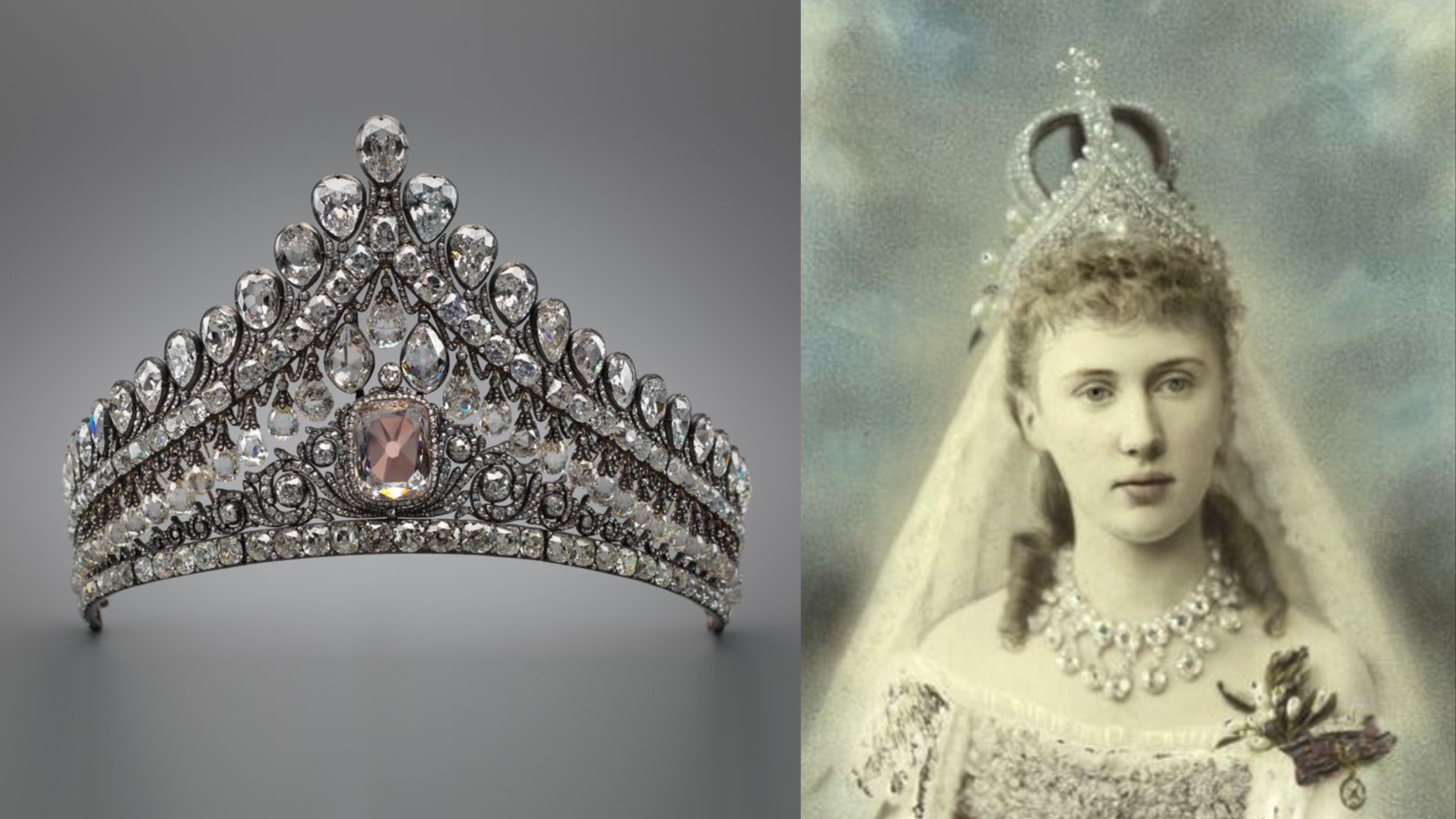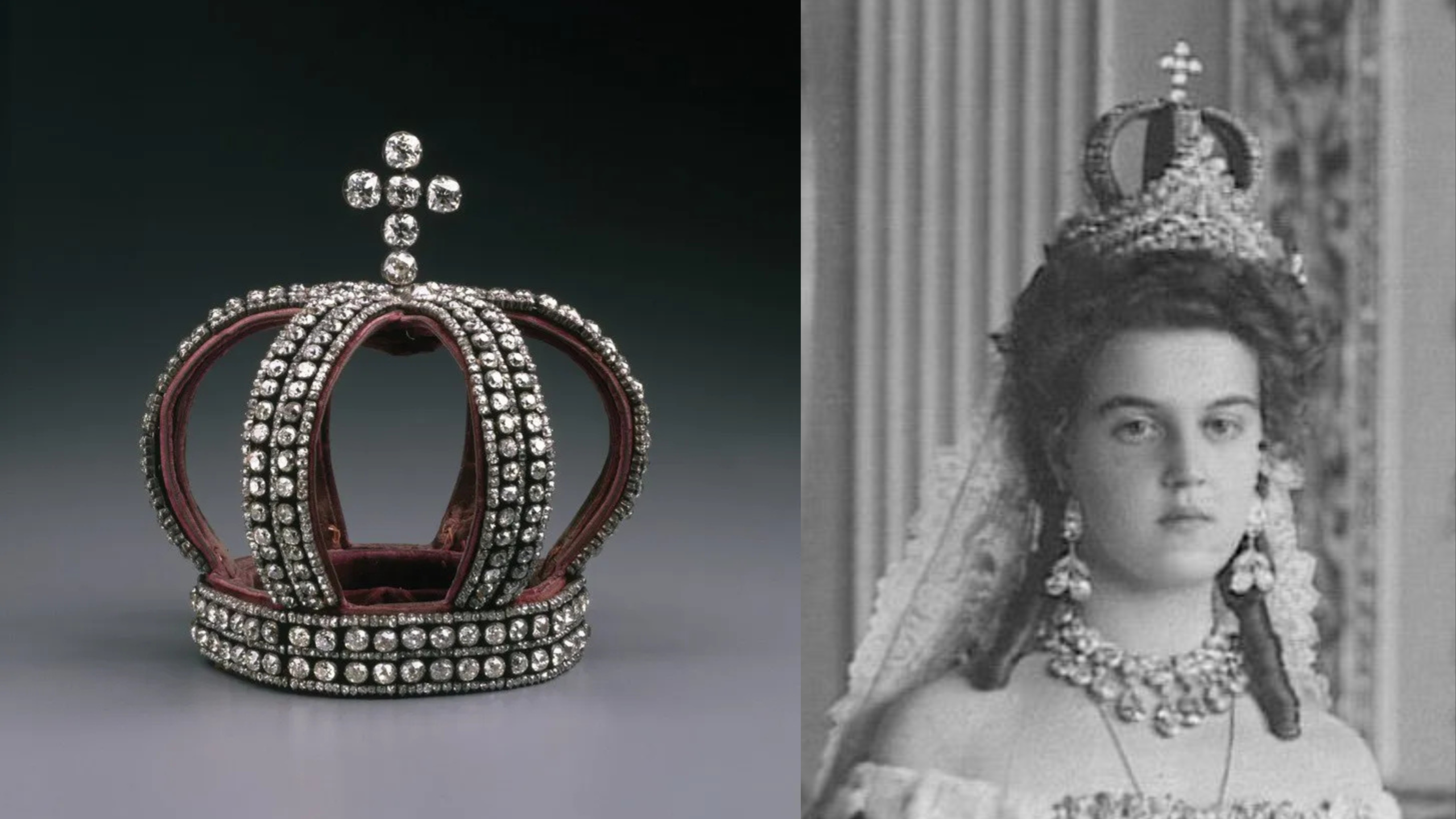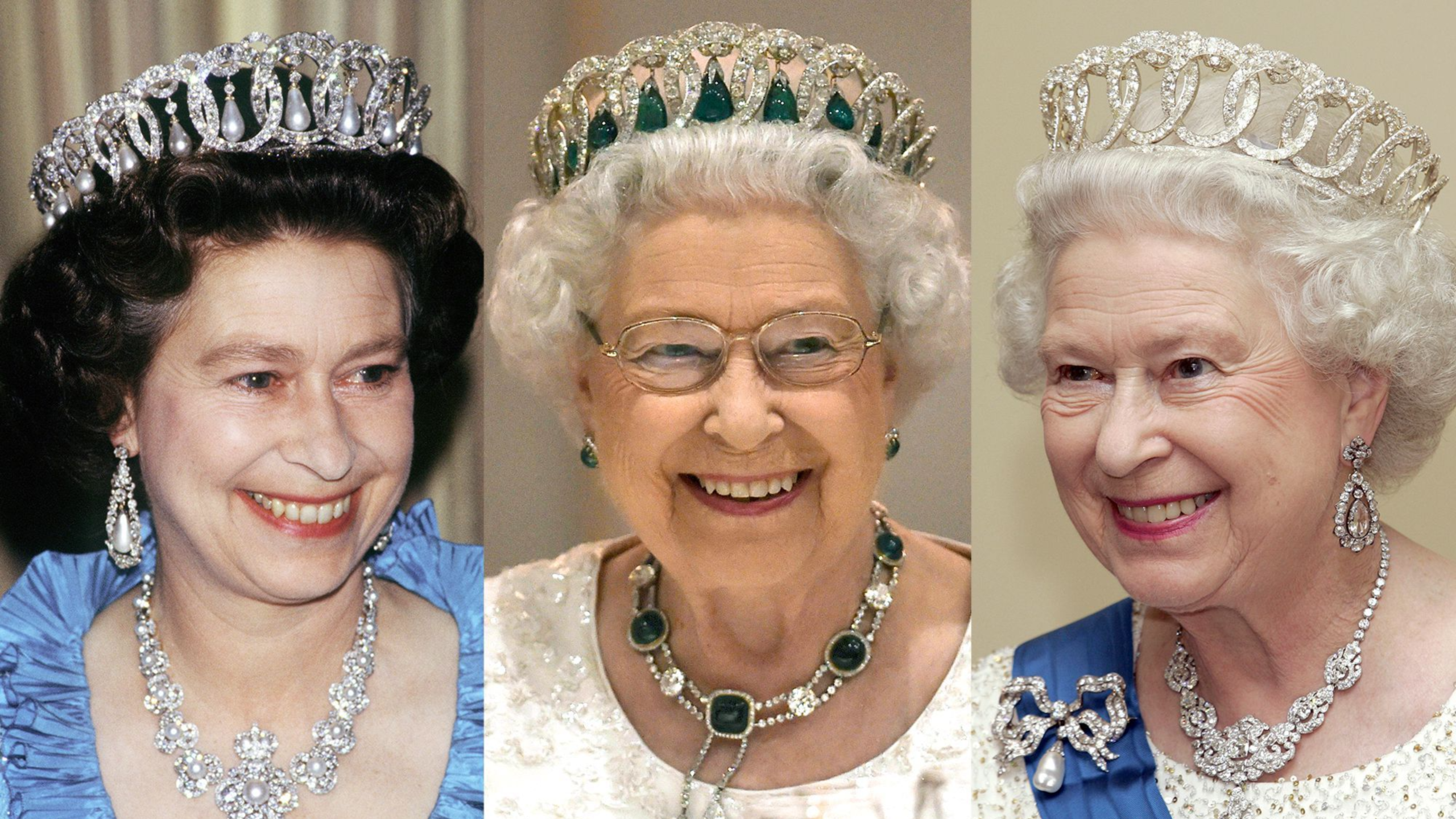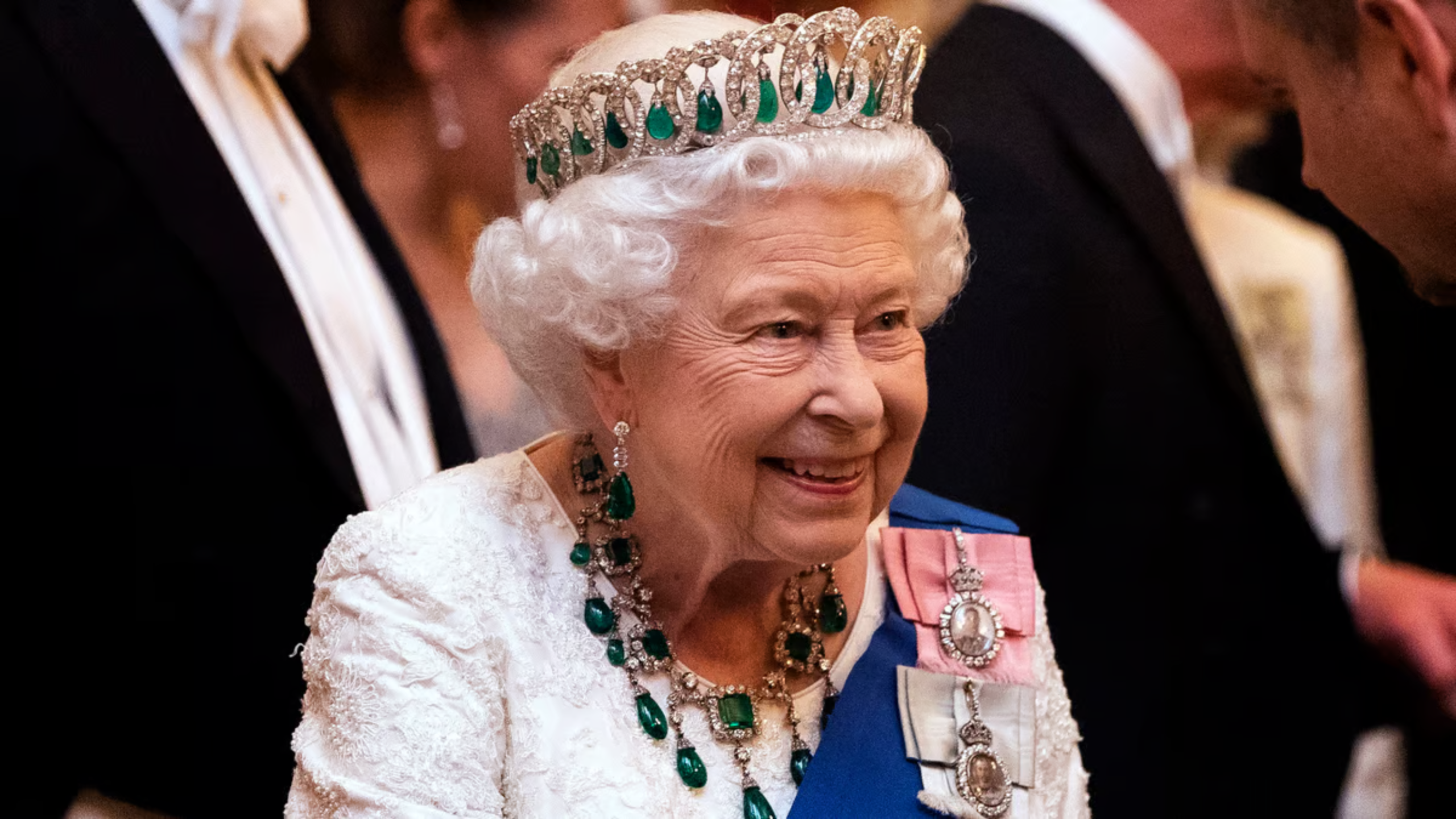The history of the Romanov, Russia’s last imperial dynasty, is marked by unparalleled pomp and poignant tragedy. The jewels of the imperial family, notably their sumptuous diadems, bear witness to this past grandeur, although many of them disappeared in the tumult of the Russian Revolution.
In 1917, the Russian Revolution put an end to more than three centuries of Romanov rule. The abdication of Nicholas II, followed by the brutal assassination of the last Tsar, his wife Alexandra Feodorovna and their five children in July 1918, sealed the final downfall of the empire. The Bolsheviks, eager to overthrow the old regime, seized many of the imperial treasures, including the famous crown jewels. These were methodically inventoried, photographed and sold abroad to finance the revolution and consolidate the Soviet regime.

The Romanov Diadems: Glimpses of a bygone era
Among these treasures, the Romanov tiaras held a central place. Symbols of power and wealth, these masterful pieces, often made by the greatest jewelers such as Bolin or Cartier, embodied the refinement and prestige of the Russian aristocracy. Sadly, most were dismantled, their precious stones sold off separately. A few rare tiaras survived this wave of destruction, becoming a valuable bargaining chip for exiled members of the imperial family, who had to sell these jewels to support themselves in exile.

Fortunately, there are a few precious photographs of some of the Romanov jewels, including many emblematic tiaras, before they were dispersed around the world.

In this section, I’ve attempted to list and describe these tiaras, based on this historical image and the few archives available. Although many of these jewels disappeared in the turmoil of history, their memory lives on through these rare visual testimonies and the fascinating story of the Romanovs. Finally, if you’d like to know more about the Romanov imperial treasure, I’ve written an important article and made a video about it.
Romanov Kokóshnik diamond tiara
This Kokóshnik tiara belonged to Empress Maria Feodorovna, wife of Emperor Paul I. Its central element is a spectacular 13.35-carat pink diamond. This tiara is also the only one to have survived the Russian Revolution and remained in Russia, making it a priceless treasure of imperial history. It is set with 175 large diamonds and over 1,200 small diamonds. The central row is distinguished by drop-shaped diamonds, freely suspended, capturing and reflecting the light with every movement of the head, adding a striking elegance to this work. It was worn by Empress Maria Feodorovna at her wedding, and later became a popular tiara for brides of the imperial family.

Romanov nuptial crown
Empress Alexandra wore this crown at her wedding to Nicholas II in 1894, establishing its status as a must-have jewel in imperial wedding regalia. This tiara was traditionally accompanied by a diamond-encrusted kokóshnik, worn in front, and long diamond earrings. The crown, with its simple spherical shape, is composed of six silver bands, surmounted by a cross set with six large diamonds. The bands of the crown are adorned with approximately 1,535 diamonds, sewn onto velvet-covered supports. It was sold by the Bolsheviks and later purchased by Marjorie Merriweather Post, who was a great jewelry collector. It is now kept at the Hillwood Museum.

Diamonds and emeralds tiara by Bolin
This sumptuous tiara, created around 1900 by the prestigious House of Bolin, is a true masterpiece. Set with diamonds and Colombian emeralds, this piece embodies the refinement of imperial jewelry of the period. Its design features bow motifs, highly prized in the early 20th century, adding a touch of timeless elegance. In 1925, it was one of the jewels inventoried and photographed by the Soviet authorities. Unfortunately, the current location of this tiara remains unknown.

The “Vladimir” tiara
Smuggled out of Russia after the tragic assassination of Tsar Nicholas II and his family, the Vladimir tiara has a fascinating history worthy of the greatest novels. This imperial jewel belonged to Grand Duchess Maria Pavlovna, wife of Grand Duke Vladimir Alexandrovitch, uncle of the Tsar. A charismatic and elegant woman, she was the last of the Romanovs to leave Russia in 1920, having survived the turmoil of the Revolution.
The story of her escape is marked by the courage of Albert Stopford, a British antiquarian and art dealer. A close friend of the Grand Duchess, Stopford managed to extract 224 jewels from her palace safe, including the Vladimir diadem. These treasures were smuggled back to England, where in January 1920, Garrard drew up an inventory of the pieces. The tumultuous journey had left its mark, however: some pearls and diamonds were missing, and the tiara was damaged.






Grand Duchess Maria Pavlovna c.1890
Queen Elizabeth Il and President Rene Coty in April 1957 ©Getty Image
The tiara allows you to choose between emeralds, pearls or the frame alone
The tiara with the "Cambridge" emeralds
The tiara allows you to choose between emeralds, pearls or the frame alone
The tiara allows you to choose between emeralds, pearls or the frame alone
In February 1920, Maria Pavlovna left Russia for good aboard an Italian steamer, which took her to Venice before returning to France. This arduous journey had a dramatic effect on her health, and she died a few months later. The diadem passed to her only daughter, Grand Duchess Elena Vladimirovna.
Queen Mary, grandmother of Queen Elizabeth II, acquired the Vladimir tiara from Princess Elena. Aware of the jewel’s fragile condition, she entrusted its repair to Garrard, the Crown’s celebrated jeweler. Not only was the tiara restored, but Queen Mary also added 15 emeralds from her own collection. She had an ingenious mechanism installed, enabling the emeralds to be easily interchanged with the original pearls, providing two versions of the jewel.

The “Beauty of Russia” tiara
One of the most famous tiaras to have belonged to the Romanovs is an 1841 creation by jeweler Carl Bolin for Alexandra Feodorovna (1798-1860), wife of Emperor Nicholas I of Russia. The tiara, a true work of art, was composed of 928 diamonds and 25 drop pearls. After the Russian Revolution, the jewel was sold by the Bolsheviks and began a long journey through the hands of various owners. In 1927, it was auctioned at Christie’s and acquired by Holmes and Co. A few years later, in 1930, the 9th Duke of Marlborough, Charles Spencer-Churchill, bought it for £3,500 and presented it to his wife Gladys Spencer-Churchill, née Deacon.
The tiara reappeared in 1978, when an anonymous London jeweler bought it at another auction. In the 1980s, it passed into the hands of Imelda Marcos, wife of former Philippine President Ferdinand Marcos. In 1986, after the fall of the Marcos regime, the tiara was confiscated by the Central Bank of the Philippines. Today, the original cannot be found, but a replica was made in 1987 by Soviet jewelers for the Russian Diamond Fund.


The diadem and the Duchess of Marlborough
Replica of the “Beauty of Russia” tiara
Diamond and sapphire “ear of wheat” tiara
This uniquely designed tiara once belonged to Empress Maria Feodorovna. Composed of wheat ears set with diamonds, it is enhanced (on the original tiara) by a colorless sapphire set in its center. The fate of this tiara after its sale remains unknown. However, in 1980, Soviet jewelers produced a replica of this piece, called the “Russian Field”, set with a yellow sapphire, which is now preserved in the Diamond Fund.

Romanov diamond and sapphire tiara by Friedrich Köchli
This magnificent tiara was made in 1894 for Alexandra Feodorovna by Friedrich Köchli (a Swiss-born silversmith who worked for the Russian Imperial Court, whose company was based in St. Petersburg). It was set in gold and silver with sixteen sapphires and diamonds. It was probably dismantled following its sale by the Bolsheviks.

Small tiara by Boucheron
In 1894, Tsar Nicholas II presented Alexandra Feodorovna with a pearl tiara as a wedding gift, a jewel she wore throughout her life. Discreetly elegant and refined, this tiara was often worn by the empress at family dinners, testifying to her sophisticated style. Probably made by Boucheron, this tiara was distinguished by its unusual style for this type of creation at the time. It was composed of 18 gold flowers set with diamonds, forming an ornament of rare finesse. The fate of this jewel remains a mystery, however, as after the Bolshevik Revolution of 1917, all trace of it was lost.

Romanov diamond tiara
This Empire-style gold and silver tiara set with diamonds, made in the early 1800s, perfectly reflects the trends of the time. At its center, a sumptuous 11-carat diamond catches the eye. The first owner of this jewel was Empress Elisabeth Alexeyevna, wife of Alexander I, and it was later passed on to Alexandra Feodorovna, wife of Nicholas II. A famous photograph of the latter, dating from 1911, shows her wearing this sparkling tiara. Unfortunately, after the Bolshevik Revolution of 1917, the tiara was sold abroad and probably dismantled.

Romanov Pearl and diamond tiara
This magnificent late 19th century gold and silver tiara set with diamonds and pearls was originally part of a set made for Maria Feodorovna. Unfortunately, the tiara was seized by the Bolsheviks after the 1917 Revolution. It seems to have been sold in the 1920s, its trace lost in history.

Pearl and diamond tiara
This impressive tiara was adorned with 113 pearls and dozens of diamonds of various sizes. It was made around 1830 by jeweler Gottlieb Ernst Jahn, who had just taken over from Andreas Roempler for Alexandra Feodorovna. No trace remains of this major piece following its sale in 1922. It was most likely dismantled.

Romanov sapphire and diamond tiara by Cartier
This sumptuous tiara was given to Grand Duchess Maria Pavlovna of Russia by her father, Grand Duke Paul Alexandrovitch, on the occasion of her marriage to Prince Wilhelm of Sweden, Duke of Södermanland. Made by Cartier in 1908, this jewel elegantly blends sapphires and diamonds, highlighting the refinement and opulence characteristic of the period. Like most other tiaras, there are no recent traces of it.

Diamond and rock crystal tiara by Cartier
This tiara was designed by Charles Jacqueau for Cartier in 1911 and made in the company’s Paris workshops. Made of sculpted rock crystal, set with platinum and diamonds, it featured a perfect round diamond weighing 3.66 carats at its center. Jacqueau designed a small series of tiaras in a similar style, using innovative materials for the time, but most of these creations disappeared over time. Like many Russian aristocrats, Irina Yusupov and her husband, Felix Yusupov, were forced to flee Russia during the 1917 revolution. Although they managed to take and sell some of their precious treasures to support themselves, this tiara was not one of the jewels saved. Hidden in one of their Russian homes, it was eventually discovered by the revolutionaries, confiscated and probably sold or dismantled.












